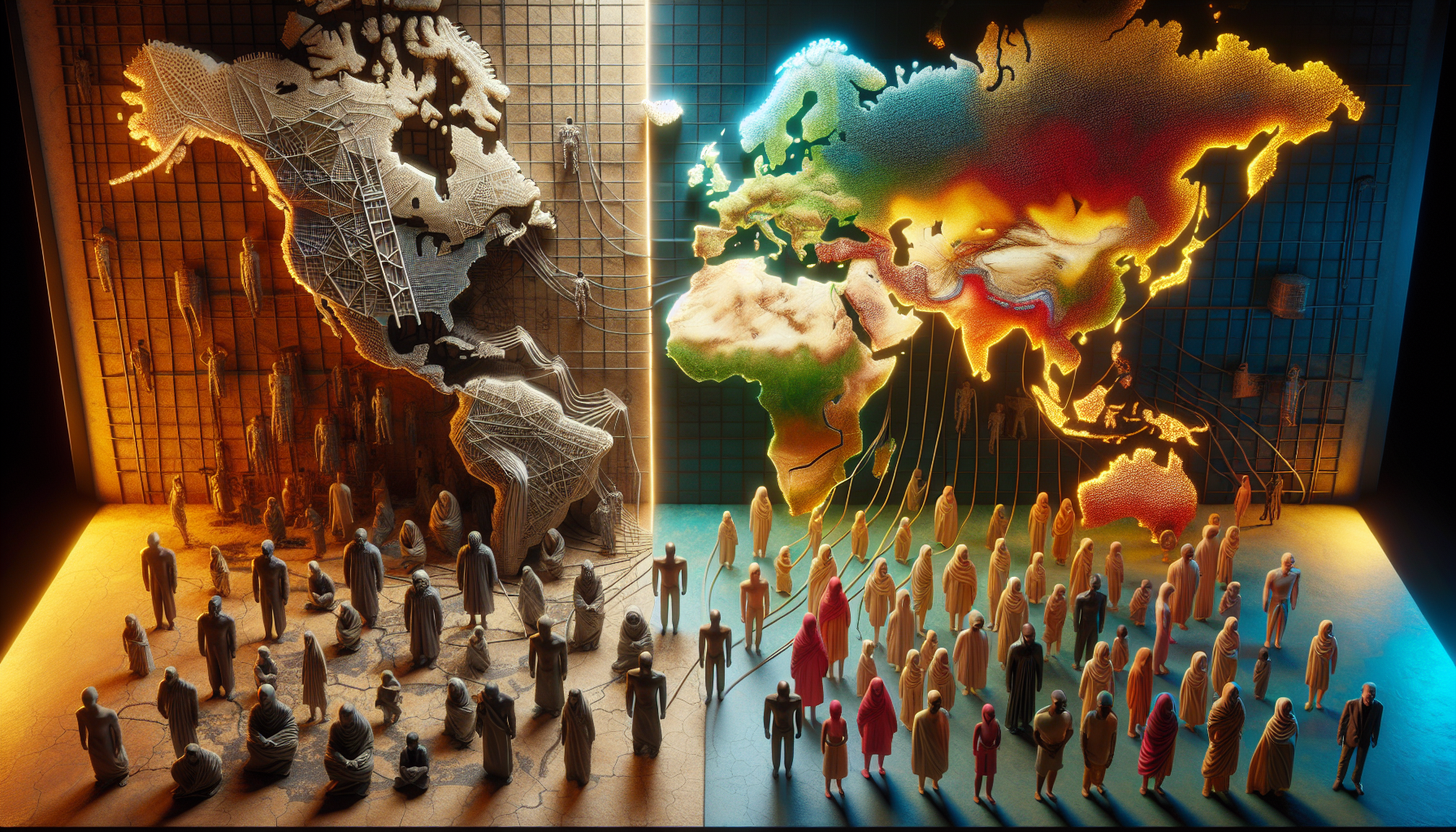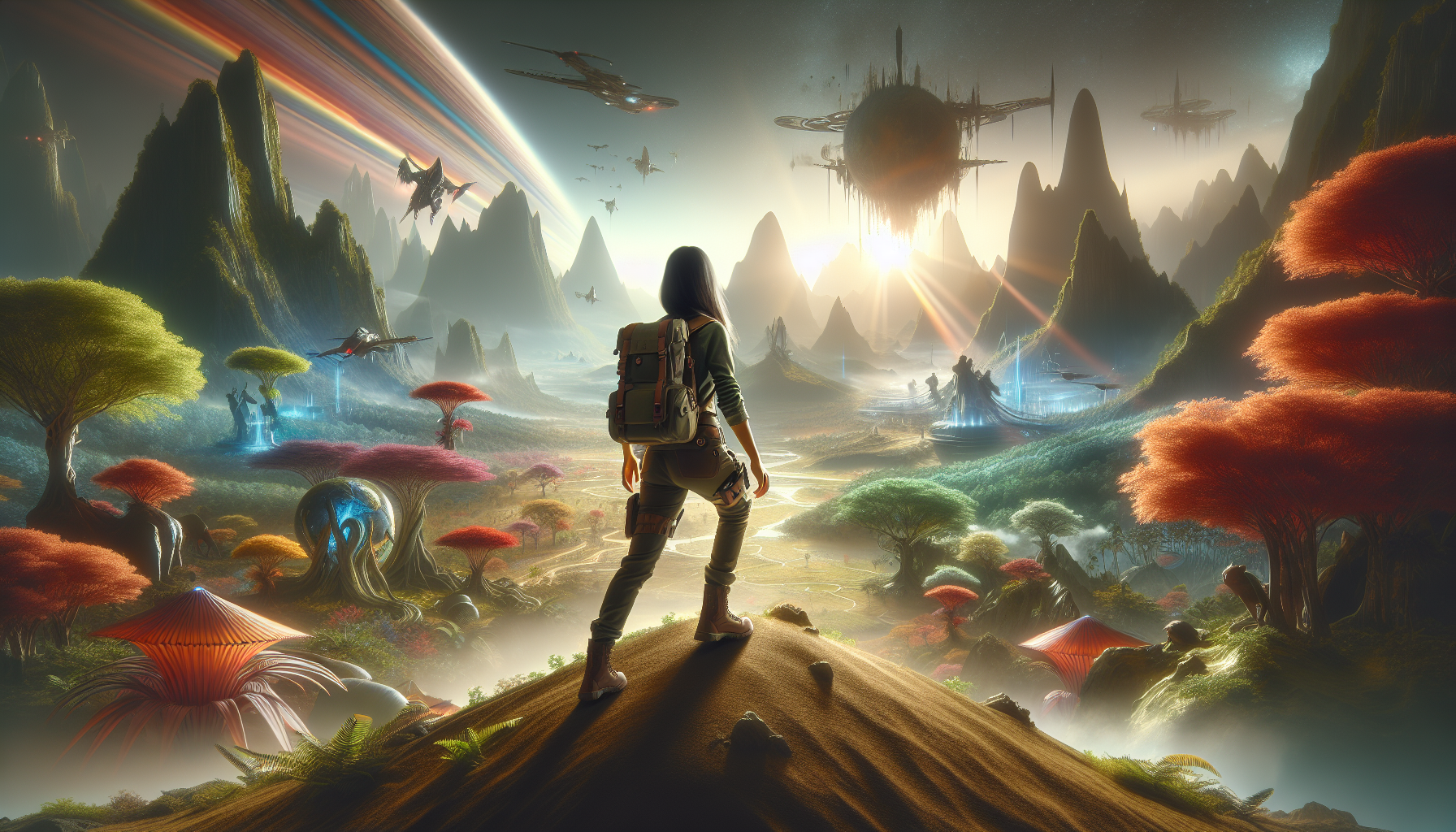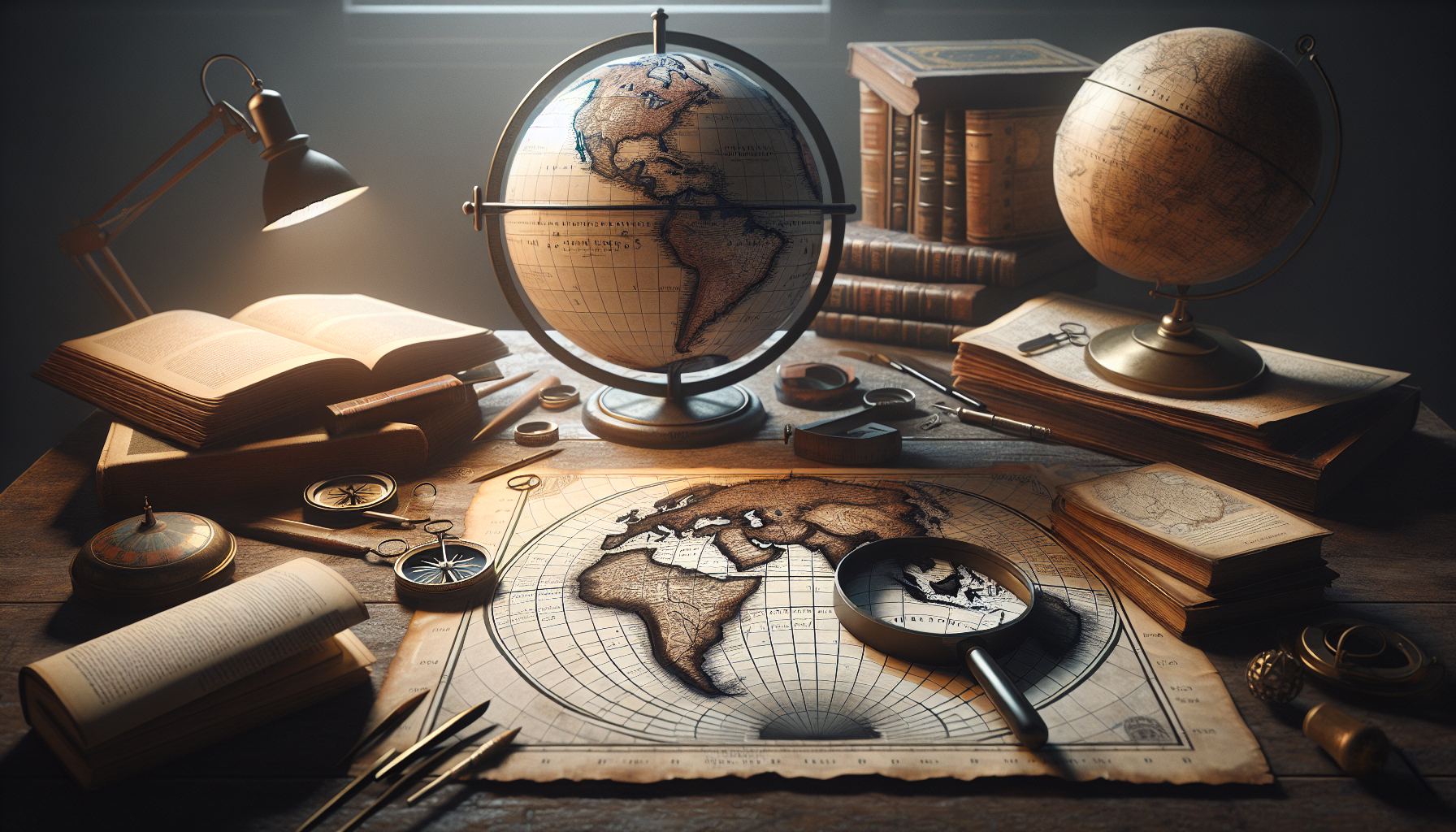광고
In a world where the lines on a map can dictate the fate of nations, define cultural identities, and influence economic prosperity, the way we perceive geography is more consequential than ever. Traditional cartography, with its rigid demarcations and often Eurocentric perspectives, has long been the lens through which we understand our world. Yet, as we advance into a more interconnected era, it’s imperative to question and expand these perspectives. What if the maps we so often take for granted could be reimagined to tell different stories, challenge the status quo, and even address systemic inequalities? This is the radical promise of alternative cartography, a burgeoning movement that seeks to reshape our understanding of borders, territories, and the diverse tapestry of human experience. 🌍
광고
The importance of maps in shaping our worldview cannot be understated. For centuries, they have been tools of power, used to legitimize territorial claims, dictate political strategies, and even wage wars. However, conventional maps often fail to capture the complexities and nuances of the societies they represent. They tend to reinforce existing hierarchies and obscure the lived realities of marginalized communities. Alternative cartography, on the other hand, endeavors to challenge these narratives by offering a fresh lens through which we can view our world. By incorporating indigenous knowledge, elevating local voices, and emphasizing ecological and social factors, these maps can serve as instruments of empowerment and change. 🗺️
광고
As we embark on this exploration of alternative cartography, we will delve into several key areas that illuminate its transformative potential. First, we will examine the historical context of map-making, highlighting how traditional maps have often perpetuated colonial and exclusionary narratives. This will set the stage for understanding why a reimagining of cartographic practices is not just beneficial but necessary. Next, we will explore innovative examples of alternative maps that prioritize inclusivity and equity, such as participatory mapping initiatives that give agency to local communities, and digital platforms that offer dynamic, interactive experiences. These case studies will illustrate how alternative cartography can reshape our perceptions of borders and inequality, fostering a more just and equitable global landscape.
Finally, we will consider the broader implications of this cartographic revolution. How might these new maps influence policy-making, education, and international relations? Can they foster greater empathy and understanding between disparate cultures and communities? And perhaps most importantly, how can we, as global citizens, contribute to and support this movement towards a more inclusive geographical consciousness? By the end of this article, you will have a comprehensive understanding of how reimagining geography through alternative cartography not only challenges existing paradigms but also offers a hopeful vision for the future. Join us as we navigate this uncharted territory and discover the profound impact that maps can have on our perception of the world and each other. 🌐
Introduction to Alternative Cartography
In recent years, the field of cartography has undergone a profound transformation. The traditional maps that have long guided explorers, travelers, and governments are being reimagined to reflect the complexities of our modern world. This evolution in mapping, often termed “alternative cartography,” challenges conventional methods by integrating new perspectives, technologies, and societal needs. At the heart of this transformation lies a critical examination of borders and inequalities, which these innovative maps aim to address. 🚀
The impact of alternative cartography is multifaceted. On one hand, it disrupts traditional power dynamics by questioning how borders are drawn and who benefits from them. On the other, it offers a platform for marginalized communities to redefine their identities and territories. This dual focus not only expands our understanding of geography but also prompts us to rethink political, social, and economic boundaries. The implications for global inequality are significant, as these maps have the potential to democratize knowledge and empower previously overlooked populations.
As we venture into the realm of alternative cartography, it’s essential to acknowledge the technological advancements that have made this possible. The digital age has revolutionized the way maps are created, distributed, and interacted with. Tools such as Geographic Information Systems (GIS), remote sensing, and interactive platforms have expanded the possibilities for map-making, allowing for unprecedented precision and personalization.
GIS technology, for instance, enables the integration of diverse data sets into a single map, providing users with a comprehensive view of geographical areas. This capability is particularly useful for addressing issues of inequality, as it allows for the visualization of socio-economic data alongside geographical features. Similarly, remote sensing technologies offer real-time insights into environmental changes, enabling the mapping of dynamic phenomena such as deforestation or urban expansion.
Interactive platforms have further democratized cartography by making it accessible to a broader audience. Websites and applications now allow users to create their own maps, adding layers of information that are relevant to their specific needs. This shift from passive map consumption to active map creation empowers individuals and communities to take control of their geographical narratives. 🎯
The Role of Community-Driven Cartography
One of the most exciting developments in alternative cartography is the rise of community-driven mapping projects. These initiatives prioritize local knowledge and perspectives, challenging the top-down approach traditionally employed in cartography. By involving community members in the map-making process, these projects aim to create more accurate and representative maps that reflect the lived realities of the areas they depict.
Community-driven cartography often involves participatory mapping sessions where local residents are invited to contribute their knowledge and insights. This process not only enhances the accuracy of maps but also fosters a sense of ownership and empowerment among participants. In many cases, these maps have been instrumental in advocating for social justice, environmental protection, and cultural preservation. 🗺️
For instance, indigenous communities have utilized alternative cartography to assert their territorial rights and protect their ancestral lands from encroachment. By mapping their traditional territories and documenting their cultural sites, these communities have strengthened their claims and gained recognition from governments and international organizations. This approach has also been adopted by urban communities seeking to address issues such as housing inequality, access to services, and environmental justice.
Case Study: Mapping Inequality in Urban Areas
In urban settings, alternative cartography has been used to highlight patterns of inequality and advocate for change. Projects such as the “Mapping Prejudice” initiative in Minneapolis have revealed the historical legacy of redlining and racial segregation by digitizing property records and visualizing discriminatory housing practices. These maps have sparked conversations about systemic racism and spurred policy changes aimed at addressing these disparities.
Moreover, community-driven mapping projects have provided a platform for marginalized groups to share their experiences and amplify their voices. By documenting issues such as food deserts, lack of public transportation, and environmental hazards, these maps have become powerful tools for advocacy and reform. As a result, they have contributed to more equitable urban planning and resource allocation.
Challenging Traditional Borders
Alternative cartography also plays a critical role in challenging traditional concepts of borders. Political boundaries, often drawn without consideration for cultural, linguistic, or ecological factors, have historically been sources of conflict and division. By reimagining these borders, alternative cartography offers a more nuanced understanding of geographical areas and their inhabitants.
This reimagining involves questioning the legitimacy of existing borders and exploring alternative ways of defining territories. For example, some alternative maps prioritize ecological boundaries, such as watersheds or bioregions, over political ones. This approach emphasizes the interconnectedness of natural systems and the importance of sustainable management. 🌍
In addition to ecological considerations, alternative cartography also explores cultural and linguistic boundaries. By highlighting areas of cultural overlap and diversity, these maps challenge the notion of homogenous nation-states and promote a more inclusive understanding of identity. This perspective is particularly relevant in regions with significant ethnic diversity or historical conflict.
As alternative cartography continues to evolve, it raises important questions about sovereignty, identity, and governance. By providing new frameworks for understanding and negotiating borders, these maps have the potential to transform political discourse and promote more peaceful coexistence.
Comparative Analysis: Traditional vs. Alternative Maps
The table below provides a comparative analysis of traditional and alternative maps, highlighting key differences in their approach and impact:
| 측면 | 전통 지도 | Alternative Maps |
|---|---|---|
| 목적 | Navigation and territorial definition | Exploration of borders and inequalities |
| Methodology | Top-down, expert-driven | Bottom-up, community-driven |
| Data Sources | Official records and surveys | Diverse data, including local knowledge |
| 집중하다 | Geopolitical boundaries | Cultural, ecological, and social factors |
| Impact | Reinforcement of existing power structures | Empowerment and social justice |
For a deeper dive into how alternative cartography is redefining borders, consider watching this informative video: “Redefining Borders: New Approaches in Modern Mapping” – Geography Now.
결론
In conclusion, the exploration of alternative cartography presents a transformative perspective on how we perceive and interact with the world. By reimagining geography, we challenge the conventional notions of borders and address the deep-seated inequalities perpetuated by traditional maps. Throughout this article, we’ve delved into the multifaceted role of maps in shaping political, economic, and social landscapes. We’ve highlighted the innovative ways in which alternative cartography can subvert established narratives, offering a more inclusive and equitable vision of our world.
One of the primary points discussed is the historical context of cartography, where maps have often been tools of power, reflecting the interests and biases of those who create them. Traditional maps tend to reinforce boundaries that divide, emphasizing nation-states’ sovereignty at the expense of cultural and regional fluidity. This conventional approach can exacerbate tensions and inequalities, as it often overlooks the realities of marginalized communities and indigenous peoples.
Alternative cartography, on the other hand, offers a fresh lens through which to view our planet. By embracing different perspectives—whether through artistic expression, technological innovation, or community-driven projects—we can create maps that tell diverse stories. These maps have the potential to highlight issues of social justice, environmental concerns, and cultural diversity, thereby fostering greater empathy and understanding among people.
The importance of this theme cannot be overstated. In a world increasingly characterized by globalization and interconnectivity, the way we perceive geographical boundaries has profound implications. Alternative cartography encourages us to rethink these borders, promoting a vision of the world that prioritizes human connections over divisions. It invites us to consider geography not as a static framework, but as a dynamic and evolving entity shaped by human experiences and relationships.
As we reflect on the potential of alternative cartography, it’s essential to recognize its power to influence policy and societal change. By illuminating the often-invisible lines of inequality and exclusion, these new maps can serve as catalysts for dialogue and action. They can inspire policymakers, educators, and activists to address the root causes of disparity and work towards a more just and equitable world.
We encourage you, our readers, to engage with this topic further. Consider how maps influence your understanding of the world and the assumptions they embed. Share your thoughts and experiences, and explore how alternative cartography can be integrated into educational curriculums, public discourse, and personal exploration. Let’s continue the conversation about how we can collectively reshape our understanding of geography to reflect a more inclusive global community.
Feel free to explore the following resources for further reading and inspiration:
1. The Power of Maps: https://www.jstor.org/stable/40154044
2. Mapping for Social Justice: https://www.tandfonline.com/doi/full/10.1080/1369118X.2020.1761859
3. Decolonizing the Map: https://www.taylorandfrancis.com/books/mono/10.4324/9780429299044
By sharing this article with others, you contribute to a broader awareness of the transformative potential of alternative cartography. Let’s work together to create maps that not only represent our world more accurately but also inspire positive change. 🌍✊
Thank you for embarking on this journey with us. Your curiosity and engagement are vital in reimagining how we understand and interact with our world. Keep exploring, questioning, and mapping new paths toward a future where borders are bridges rather than barriers.

토니 산토스 디지털 지도 제작자이자 시각적 사고자이며, 놀랍도록 기이한 것들을 큐레이터로 활동합니다. ~에 아이사프그는 야생의 세계로 뛰어든다 기괴한 지도, 상상의 지리, 그리고 대안적인 지도학적 현실우리가 주변 세계를 보는 방식, 느끼는 방식에 대한 새로운 관점을 제공합니다.
그의 작업은 다음과 같은 믿음에 뿌리를 두고 있습니다. 지도는 단순한 항해 도구가 아니다. 그것은 인식, 기억, 상상, 심지어 신화로 통하는 관문입니다. 왜곡된 역사 도표부터 초현실적인 지형, 음모 지도, AI가 생성한 세계 구축까지 토니는 논리에 도전하고 호기심을 불러일으키는 지도를 제작하고 수집합니다..
스토리텔링, 예술 및 상징적 탐구 분야의 배경을 가진 Toni는 Aysapp을 플랫폼으로 사용하여 공개합니다. 잊혀진 장소, 보이지 않는 경계, 그리고 새롭게 상상된 현실. 그의 창작물은 '세상이 거꾸로 된다면 어떨까?'와 같은 질문을 던진다. 지도가 지리적 진실이 아닌 감정적 진실을 말해준다면 어떨까?
창조자로서 아이사프그는 임무를 수행 중입니다 호기심을 불러일으키다창의적인 사고를 장려하고 상상력, 문화, 공간적 스토리텔링의 교차점을 한 번에 한 개의 이상한 지도를 통해 탐구합니다.
🌀 그의 지도학적 우주는 다음을 탐구합니다.
-
비현실적이지만 의미 있는 풍경
-
감정, 기억, 그리고 지리로서의 신화
-
숨겨진 진실을 드러내기 위해 왜곡된 지도
당신이 판타지 세계를 좋아하는 사람이든, 지도 수집가든, 호기심 많은 여행가든, 아니면 특이한 것을 좋아하는 사람이든, 토니는 당신을 지도학적 상상력의 가장 특별한 구석으로 의도적으로 길을 잃도록 초대합니다.



